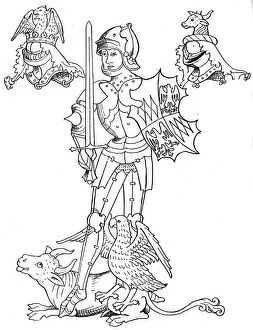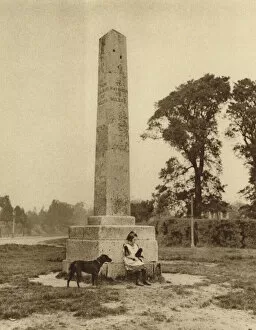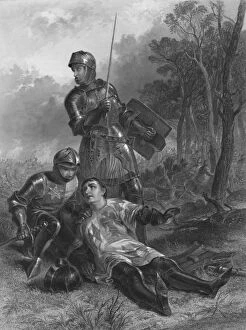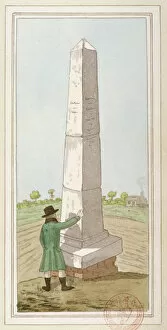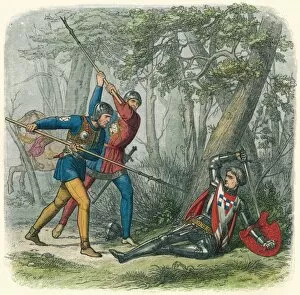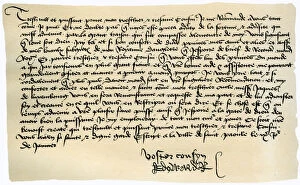Warwick The Kingmaker Collection
Warwick the Kingmaker, a prominent figure in 15th century England, was not just an English nobleman and soldier but a key player in the political landscape of his time
For sale as Licensed Images
Choose your image, Select your licence and Download the media
Warwick the Kingmaker, a prominent figure in 15th century England, was not just an English nobleman and soldier but a key player in the political landscape of his time. With his resolute conduct prior to the Battle of Towton, Warwick showcased his unwavering determination and strategic prowess. Intriguingly captured in a black and white photograph is Hadley High Stone on the battlefield of Barnet. This stone stands as a silent witness to the bloodshed that occurred during this historic conflict. Edward IV, who reigned from 1442 to 1483, remains closely associated with Warwick's legacy. An unknown artist beautifully depicted Edward IV in an artwork dating back to 1830, showcasing the king's regal presence. The death of Warwick himself has been immortalized by various artists throughout history. T Brown's poignant portrayal from around 1870 captures this somber moment with great emotion. Another depiction by James William Edmund Doyle showcases "Death to the Kingmaker" during the Battle of Barnet in 1471. However, it is important to note that Warwick was not always at odds with royalty. In another artwork by Doyle titled "The Earl of Warwick submits to Queen Margaret, " we witness a different side of him – one where he bows down before Queen Margaret in an act of submission. Monken Hadley's obelisk also holds significance as it serves as a reminder of past events surrounding Warwick and his influence over Hertfordshire during c1800. A letter written by Edward IV himself adds depth to our understanding of this historical period. Dated January 9th, 1471, this correspondence addressed Francis II, Duke of Brittany and sheds light on Edward IV's perspective on matters involving war and diplomacy. Lastly, an artistic rendition from around c1880 portrays yet again the tragic demise – forever etching his name into history books for his role in shaping the tumultuous events of 15th century England.

